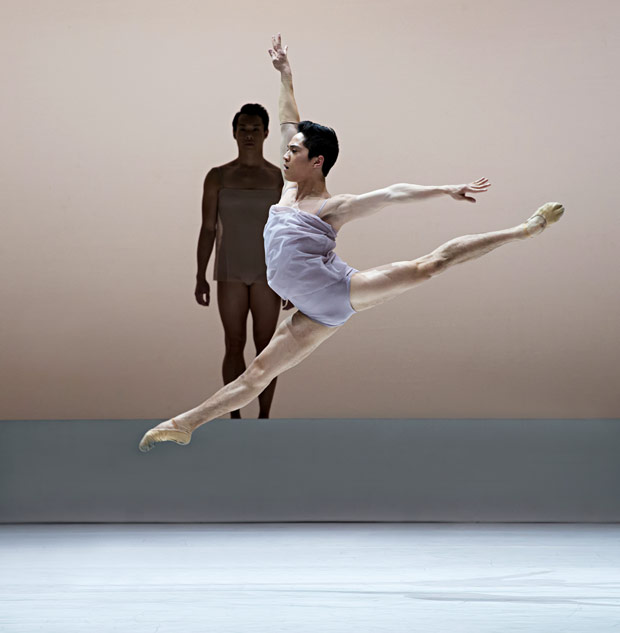
© Gene Schiavone. (Click image for larger version)
Boston Ballet
Chroma, Serenade, Symphony in C
Boston, Opera House
2 May 2013
www.bostonballet.org
www.bostonoperahouse.com
Mikko Nissinen, artistic director of Boston Ballet, has once again shown his flair for programming in the production titled Chroma which opened May 2 at the Boston Opera House. In order of presentation, the three ballets on view were Balanchine’s Serenade, Wayne McGregor’s Chroma, and Balanchine’s Symphony in C. Something old, something new, little borrowed, nothing blue.
Serenade was the first ballet Balanchine choreographed in the US and its history is fascinating. Balanchine began working with the girls who happened to be in class on March 14, 1934. There were seventeen when another dancer arrived late, her tardy appearance was incorporated into the choreography. At the next rehearsal only nine girls appeared; at another, only four. Their groups too became part of the choreography. A girl tripped and fell in rehearsal, and her accident became the climatic end of the first movement. It’s thus easy to take the ballet as an improvisatory piece, the result of chance and a piece that doesn’t ask us to think overtime. Totally wrong.
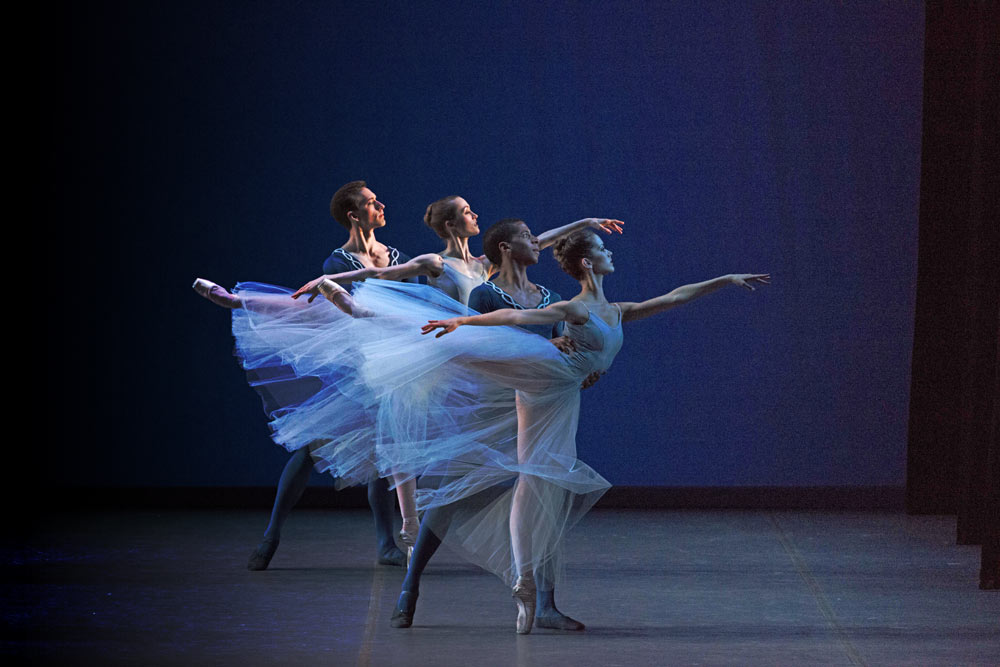
© Gene Schiavone. (Click image for larger version)
For one thing, the ballet is an anthology of features that become signatures of Balanchine’s style: hands and arms and bodies that twine together and then unfold, male solos of an almost drunken legato, off-balance dancing that provides a sense of continual risk and thrill, the inclusion of skipping and running and other mundane activities that most other choreographers eschew, the use of classical positions to show the fundamental architecture of the piece, the creation of evocative images that lodge themselves permanently in the imagination, the use of dance not to accompany music but to embody it. (Here the embodiment is of Tchaikovsky’s swooningly beautiful Serenade in C Major for String Orchestra.)
I’ve seen it perhaps fifty times, but each time it’s as if I’m seeing it anew – partly because of its endless invention and partly because it’s so powerfully allusive. I was especially struck this time by the way images hint, suggest, evoke: a woman hovering over a man with arms outspread like a ministering angel, a farewell embrace that heralds the approach of death, the opening view of those seventeen woman gazing heavenward, right arms raised, like the annunciation of a miracle. Such dense texture of allusion creates a work multi-layered and immensely rich. When it ends, the world ends.
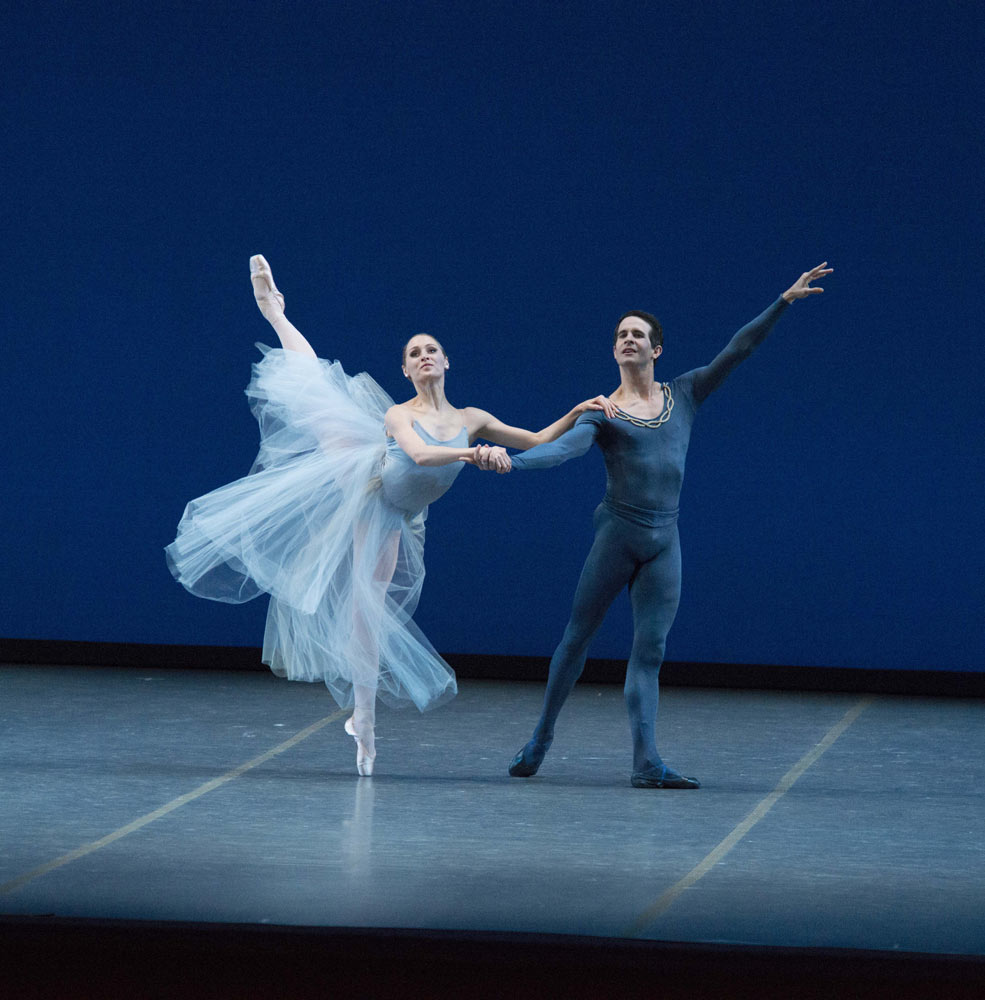
© Gene Schiavone. (Click image for larger version)
Chroma by Wayne McGregor is an altogether different creature. The title is the Greek word for color, the name of a fictional character in DC Comics, a series of color and design software for mobile devices, a Queer Studies literary journal in the UK, a quality of a pitch class in music theory, a novel by Frederick Barthelme, a book by Derek Jarman, a musical composition by Rebecca Saunders, and many other things besides. By contrast, the set by John Pawson which looks like a painting by Ellsworth Kelly is the essence of minimalism: a bare stage with a backdrop containing a large rectangular cutout, a stage within a stage where the dancers appear before making their entrances. Pastel color contrasts between large and small stage are never less than ravishing. The small rectangle is bathed in pale gold or violet while the larger stage shows cream or pearl gray.

© Gene Schiavone. (Click image for larger version)
The score is an amalgam of seven pieces by Joby Talbot and Jack White and requires one of the largest groups of musicians ever to perform with Boston Ballet. The choreography is radically original and based on a strict geometry, fast-paced for the most part, and highly athletic, pushing the dancers to and almost beyond their limits. There’s the requisite amount of spastic mantis movement, in case you feared you weren’t seeing a 21st century piece, but the overall mood is what might be called lyrical gymnastic. Much of the movement is “cool,” but the same can be said of Cirque du Soleil and a lot of pole-dancing.
On the other hand, it’s a difficult piece to absorb and it improved the more I saw it. Perhaps it’s meant as a kind of sherbet to clear the palate between the Balanchine pieces. Also, McGregor was working with Royal Ballet dancers he knew something of, and on YouTube with those RB dancers, Chroma looks better. (The only YouTube performance improved in Boston is that of Kathleen Breen Combes.) In short, I found the ballet dazzling but soulless.
Symphony in C set to Bizet could as easily be titled Ode to Joy. If I were to introduce a novice to ballet, I would probably choose this one for its unflagging invention, its sheer exuberance and its brilliant expression of the tension at the heart of ballet between discipline and vitality. Misa Kuranaga has never been more effervescent than in the First Movement on opening night (and it was her third ballet of the evening, a sign of how many dancers are injured). Though I’d found Lia Cirio and Lasha Khozashvili disappointing in The Sleeping Beauty only a few weeks before, they found new life as partners each time they appeared. Kathleen Breen Combes and Jeffrey Cirio gave delicious performances in the Third Movement of Symphony in C, and Whitney Jensen, Alejandro Virelles, Lawrence Rines, and Artjom Maksakov were welcome presences throughout. I was especially glad to see Seo Hye Han, the new corps member from Korea who won gold at last year’s Boston International Ballet Competition. She’s a dancer of impressive technique with a gracious presence and a lovely line.
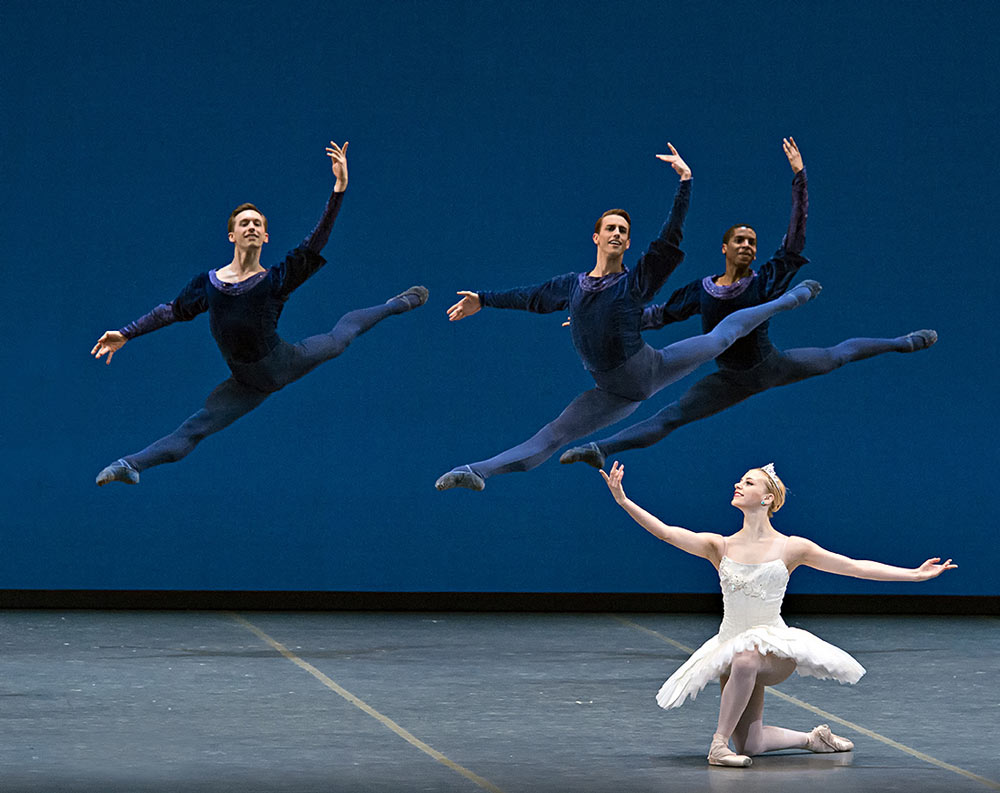
© Gene Schiavone. (Click image for larger version)
Now that Seo joins Kathleen Breen Combes, Misa Kuranaga and Whitney Jensen, Boston Ballet’s women are the envy of virtually any ballet company in the world. But the contrast between women and men becomes that much more telling. For a company that calls itself world-class, there are a lot of dull men on view. Several have bad bodies (one is knock-kneed), and there’s hardly an ounce of virility or charisma among them. For the most part they’re competent but dull. Last year, the best male principal, James Whiteside, left for ABT, and there’s now a rumor that half of the company’s few good men will be leaving at the end of this season. The new soloist from Armenia, Avetik Karapetyan, was dazzling as the lead Russian dancer in Nutcracker, but since then we’ve hardly seen him. If the other three major American companies (ABT, San Francisco, and New York City Ballet) can attract and retain first-rate men, why can’t Boston Ballet? Until it does, it will remain a lopsided and thus a disappointing company.













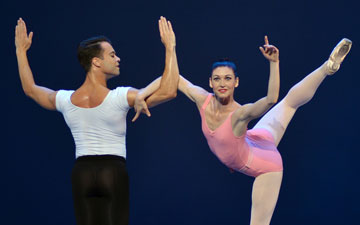



You must be logged in to post a comment.